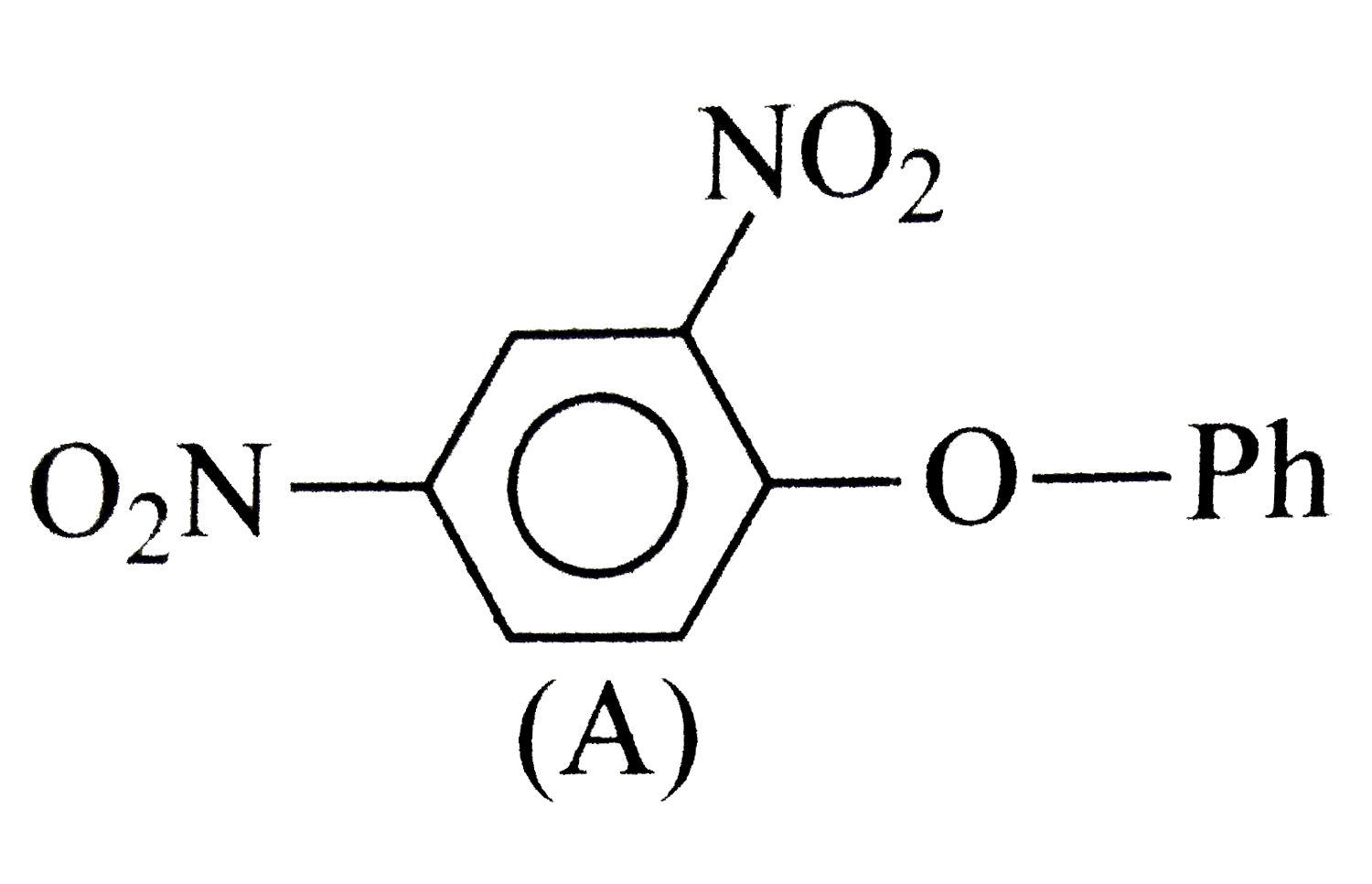Which of the following give ether ?
CH3CH2ONa and C2H5I
CH3−CH2−OHH⊕−−−−−→140∘C
CH3−CH2−IdryAg2O−−−−→
All of the above
The correct Answer is:D
To determine which of the following reactions give ether, we will analyze each reaction step by step.
Step 1: Reaction with Sodium Ethoxide and Alkyl Halide
1. Identify the reactants: Sodium ethoxide (CH3CH2O^-Na^+) and ethyl iodide (CH3CH2I).
2. Mechanism: This reaction follows the SN2 mechanism.
3. Nucleophilic attack: The ethoxide ion (CH3CH2O^-) attacks the electrophilic carbon in ethyl iodide (CH3CH2I), resulting in the formation of diethyl ether (CH3CH2OCH2CH3) and sodium iodide (NaI).
4. Product: The product formed is diethyl ether.
Step 2: Reaction of Alcohol in Acidic Medium
1. Identify the reactants: Ethanol (CH3CH2OH) and H^+ (acid).
2. Protonation: The alcohol is protonated to form protonated ethanol (CH3CH2OH2^+).
3. Mechanism: This reaction also follows the SN2 mechanism.
4. Nucleophilic attack: Another molecule of ethanol acts as a nucleophile and attacks the protonated ethanol, leading to the formation of diethyl ether (CH3CH2OCH2CH3) and water.
5. Product: The product formed is diethyl ether.
Step 3: Reaction with Dry Silver Oxide
1. Identify the reactants: Ethyl iodide (CH3CH2I) and dry silver oxide (Ag2O).
2. Mechanism: On heating, the silver oxide facilitates the elimination of iodine and formation of ether.
3. Nucleophilic attack: The ethyl group reacts with another ethyl iodide to form diethyl ether (CH3CH2OCH2CH3) and silver iodide (AgI).
4. Product: The product formed is diethyl ether.
Conclusion
After analyzing all three reactions, we find that all of them produce ether. Therefore, the answer is that all of the above reactions give ether.
Final Answer
All of the above reactions give ether.
---
1. Identify the reactants: Sodium ethoxide (CH3CH2O^-Na^+) and ethyl iodide (CH3CH2I).
2. Mechanism: This reaction follows the SN2 mechanism.
3. Nucleophilic attack: The ethoxide ion (CH3CH2O^-) attacks the electrophilic carbon in ethyl iodide (CH3CH2I), resulting in the formation of diethyl ether (CH3CH2OCH2CH3) and sodium iodide (NaI).
4. Product: The product formed is diethyl ether.
1. Identify the reactants: Ethanol (CH3CH2OH) and H^+ (acid).
2. Protonation: The alcohol is protonated to form protonated ethanol (CH3CH2OH2^+).
3. Mechanism: This reaction also follows the SN2 mechanism.
4. Nucleophilic attack: Another molecule of ethanol acts as a nucleophile and attacks the protonated ethanol, leading to the formation of diethyl ether (CH3CH2OCH2CH3) and water.
5. Product: The product formed is diethyl ether.
1. Identify the reactants: Ethyl iodide (CH3CH2I) and dry silver oxide (Ag2O).
2. Mechanism: On heating, the silver oxide facilitates the elimination of iodine and formation of ether.
3. Nucleophilic attack: The ethyl group reacts with another ethyl iodide to form diethyl ether (CH3CH2OCH2CH3) and silver iodide (AgI).
4. Product: The product formed is diethyl ether.
After analyzing all three reactions, we find that all of them produce ether. Therefore, the answer is that all of the above reactions give ether.
All of the above reactions give ether.
Topper's Solved these Questions
Similar Questions
Knowledge Check
Which of the following ethers will get hydrolysed by HI ?
A B
B C
C D
D
Which of the following ethers is the most unreactive to cleavage with conc. HBr?
APh−CH2−O−CH3BPh−O−PhC D
D
Which of the following ethers will get hydrolysed by H⊕/H2O?
A B
B C
C D
D
Which of the following ethers is unlikely to be cleaved by not conc. HI ?
View SolutionWhich of the following ethers is presents in clove oil ?
View SolutionWhich of the following would give a better yield of ether ?
 .
.
View SolutionWhich of the folliwning ether wil always give SN2 mechanism in acidic as well as basic conditions?
View SolutionWhich of the following will give an alkane having same number of carbon atoms on reacting with an alkyl halide ?
(A ) RMgX
(b) Na + Ether
(c ) LiAIH4
(d) Sn + HCl
View Solution

